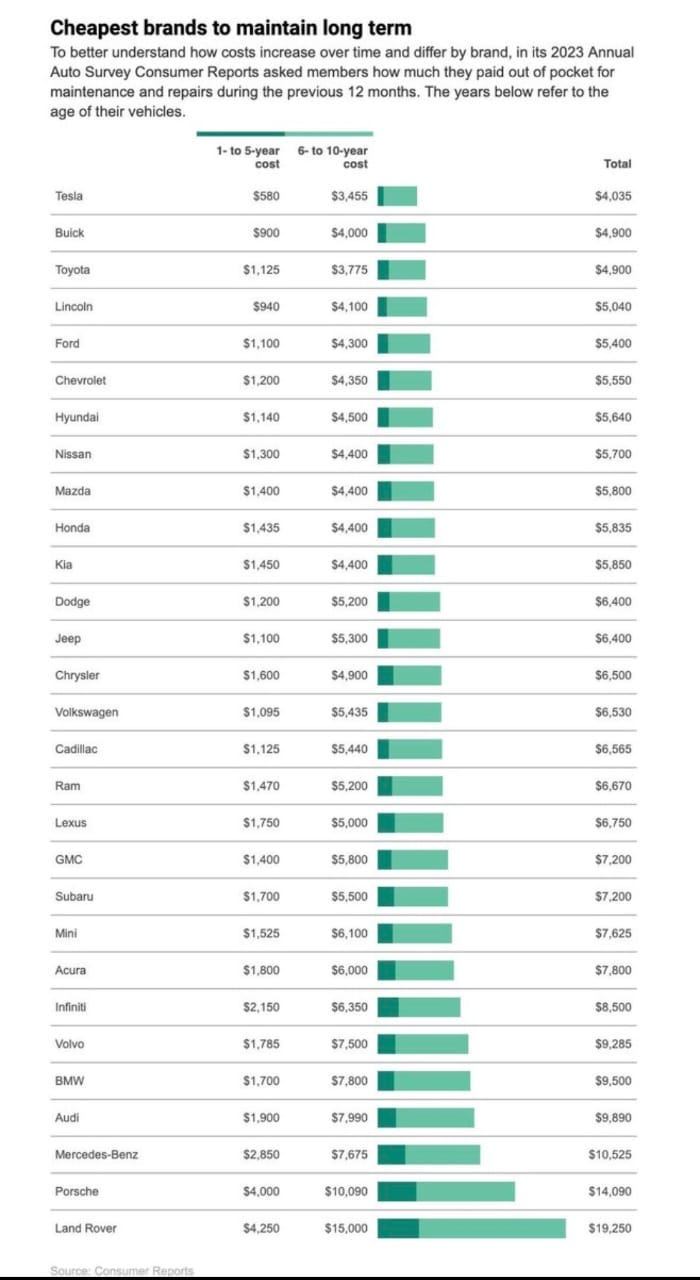
The claim that Tesla vehicles are the lowest cost cars to maintain has been a topic of discussion among consumers and industry experts alike. With the automotive landscape rapidly evolving, particularly with the advent of electric vehicles (EVs), maintenance costs have become a crucial factor for potential buyers.

Tesla, a leader in the electric vehicle market, has often been cited for its innovative approach to vehicle maintenance. Unlike traditional internal combustion engine vehicles, Tesla’s electric cars require no oil changes, fuel filters, spark plug replacements, or emission checks. These factors contribute to the lower routine maintenance needs of Tesla vehicles.
When it comes to maintenance, Tesla has taken a unique approach. The company recommends specific maintenance services on an “as-needed” basis, which means that instead of a fixed schedule, Tesla’s engineers continuously review, and update maintenance recommendations based on the vehicle’s condition and performance data. This can lead to cost savings over time, as unnecessary services are avoided.
Register for Tekedia Mini-MBA edition 19 (Feb 9 – May 2, 2026): big discounts for early bird.
Tekedia AI in Business Masterclass opens registrations.
Join Tekedia Capital Syndicate and co-invest in great global startups.
Register for Tekedia AI Lab: From Technical Design to Deployment (next edition begins Jan 24 2026).
Recent data suggests that the average annual repair cost for a Tesla is approximately $832, which is higher than the industry average of $652 across all brands. However, it’s essential to consider that Tesla’s maintenance schedule operates on an “as-needed” basis, as opposed to a fixed schedule. This means that Tesla engineers continuously review, and update maintenance recommendations based on the vehicle’s condition and performance data.
For instance, Tesla recommends cabin air filter replacements every two to three years, depending on the filter type, and tire rotations every 6,250 miles or when there is a significant tread depth difference. These recommendations are relatively standard across the industry.
When comparing long-term maintenance costs, a Tesla Model Y’s 100,000-mile maintenance estimate ranges from $8,250 for base trims to $15,000 for performance trims. In contrast, a Toyota Highlander had a 100,000-mile maintenance and repair cost of $14,029, while a Honda Accord came in at $7,684. These figures indicate that while Tesla’s maintenance costs are competitive, they are not necessarily the lowest in the industry.
It’s also worth noting that while the upfront maintenance costs for Tesla vehicles may be lower, some repairs can be expensive due to the specialized care required for electric vehicles. This is where third-party extended warranties can play a role in managing ownership costs, especially as the vehicle ages.
While Tesla vehicles do offer some advantages in terms of maintenance costs due to their electric nature, the claim that they are the lowest cost cars to maintain does not hold universally. Maintenance and repair costs can vary widely based on the model, usage, and individual circumstances. Prospective buyers should consider the total cost of ownership, including potential repairs, when making their decision.
Tesla’s maintenance costs are competitive within the EV market, but not necessarily the lowest. The company’s “as-needed” maintenance philosophy can lead to savings, but potential owners should be aware of the possibility of higher repair costs. As the EV market continues to expand and evolve, maintenance costs will likely become an even more critical factor for consumers. Keeping an eye on how Tesla and other EV brands adapt their maintenance strategies will be essential for those look1ing to make an informed decision on their next vehicle purchase.



